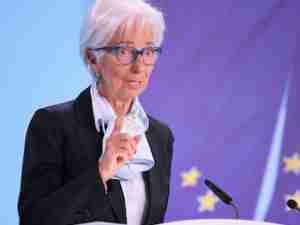Canada’s national export agency says it plans to commit to net-zero greenhouse gas emissions by 2050 and is working on a range of new sustainable financing ideas to help decarbonize its portfolio.
Export Development Canada, which provides financing, insurance and other support to Canadian businesses, including the oil and gas industry, will announce its 2050 plan later this month, Chief Executive Officer Mairead Lavery said in an interview. Its focus will be on helping Canada’s natural resource sectors transition to a zero-emissions future.
“We will be very clear in that announcement that it’s a net zero,” Lavery said Monday. “That we do believe in the science, which indicates there will be a need for transition from fossil fuels to renewable energy.”
Lavery, who in 2019 became the first woman to helm EDC in its 75-year history, has made environmental, social and governance investing one of her three priorities, along with boosting trade and tackling inclusion, diversity and equity.
The organization is putting more focus on financial support for technology that aims to slash carbon from Canada’s highest-emitting sectors, as well as providing sustainable finance to help other businesses get to zero emissions, she said.
In 2020, EDC financed 20 transactions from three outstanding green bonds, which it says resulted in about 6.1 million metric tons of carbon dioxide being avoided. Since 2012, the agency says it has facilitated C$13.5 billion ($10.6 billion) in Canadian clean technology exports by supporting companies that focus on climate mitigation or environmental protection.
With the 2050 pledge, EDC will adopt science-based targets for decarbonization, Lavery said, and will augment its existing green bond program with other types of sustainable finance, “some of which is still to be built or yet to be found in the market.”
EDC is talking to financial institutions about a range of potential products, including sustainability-linked lending and insurance products, she said. She’s also interested in “creative” solutions to decarbonization, including voluntary carbon-trading markets. “I think we’re going to need all tools in the tool kit.”
EDC’s primary role is to help Canadian exporters, a segment of the economy that’s heavily weighted to carbon-heavy natural resources including energy, mining and forestry, as well as industrial manufacturing. During the early weeks of Covid-19, its mandate was expanded by the government to including providing emergency loans for companies outside of the export sector.
Its current goal is to reduce emissions in its portfolio—including Scope 3 emissions—by 40% from a 2018 baseline based on its six most carbon-intensive sectors. Getting financed emissions to net zero would be a major undertaking for any financial institution, Lavery stressed, but is particularly ambitious given the EDC‘s mandate to support Canadian businesses across all sectors.
Still, the biggest difference to be made involves tackling large emitters, especially the oil and gas industry, which account for 23% of Canadian exports, she said. “They are going to need our support vis-a-vis financing for new technology,” Lavery said. “This is a sector that understands it needs to change.”




